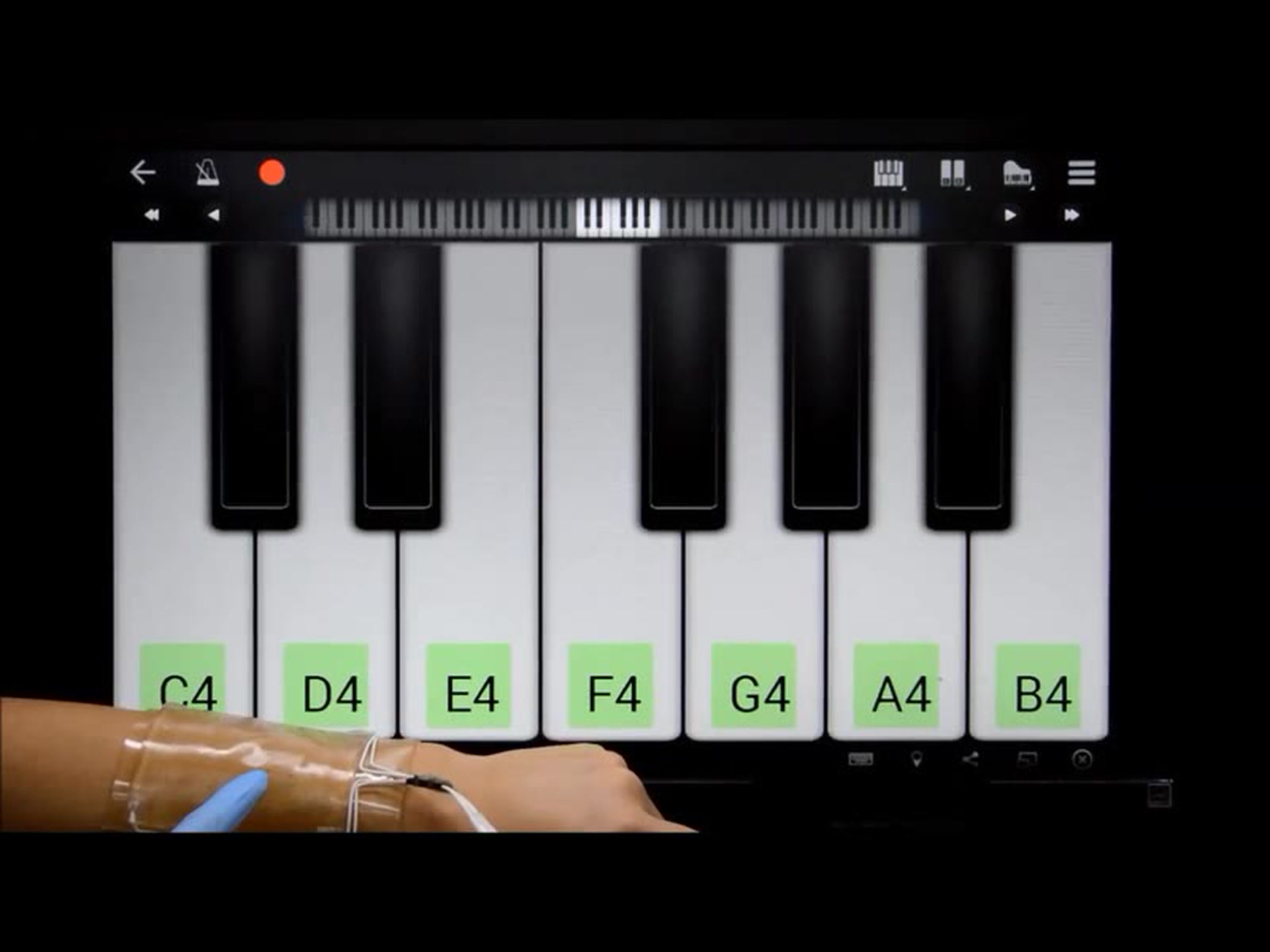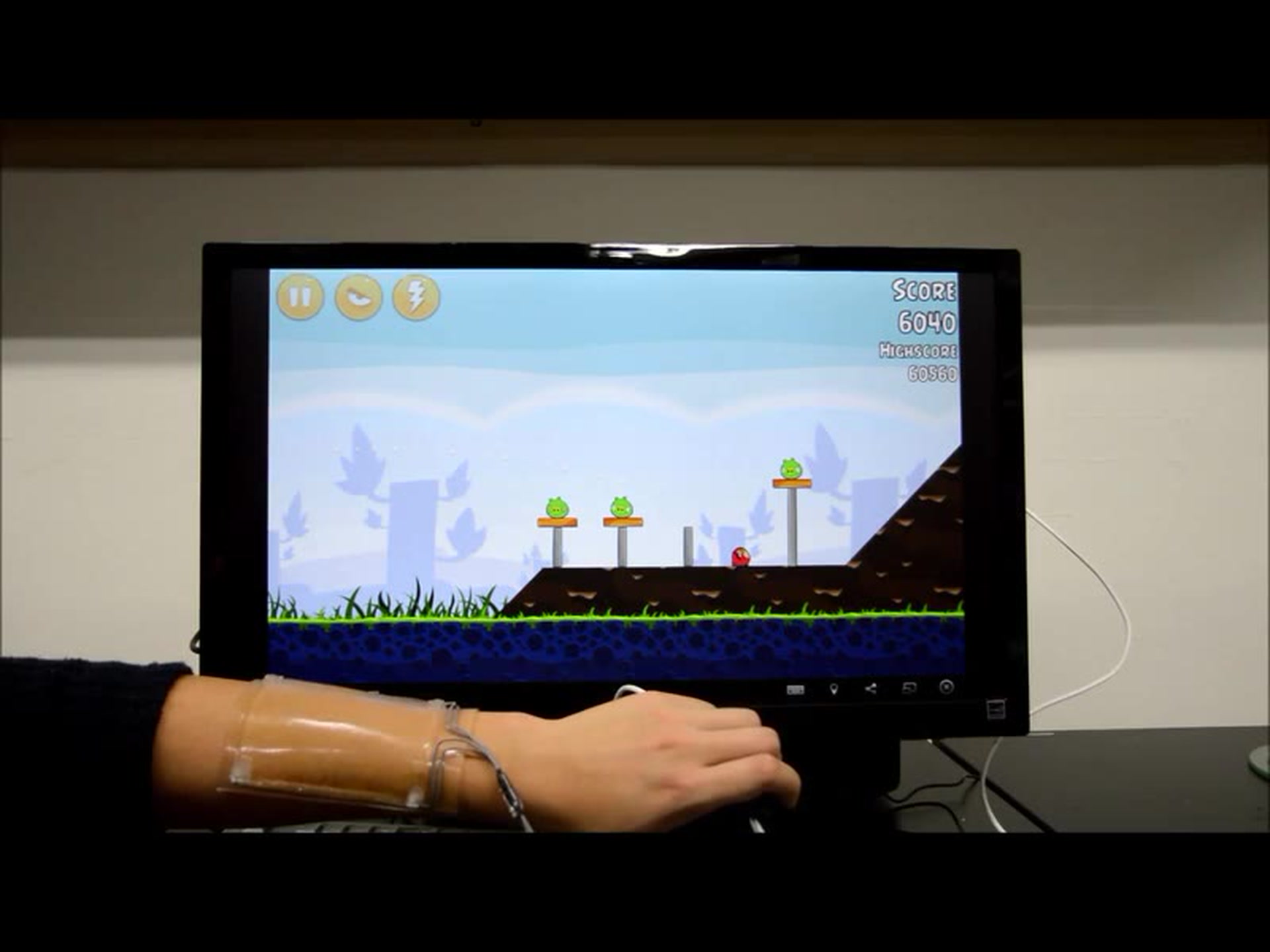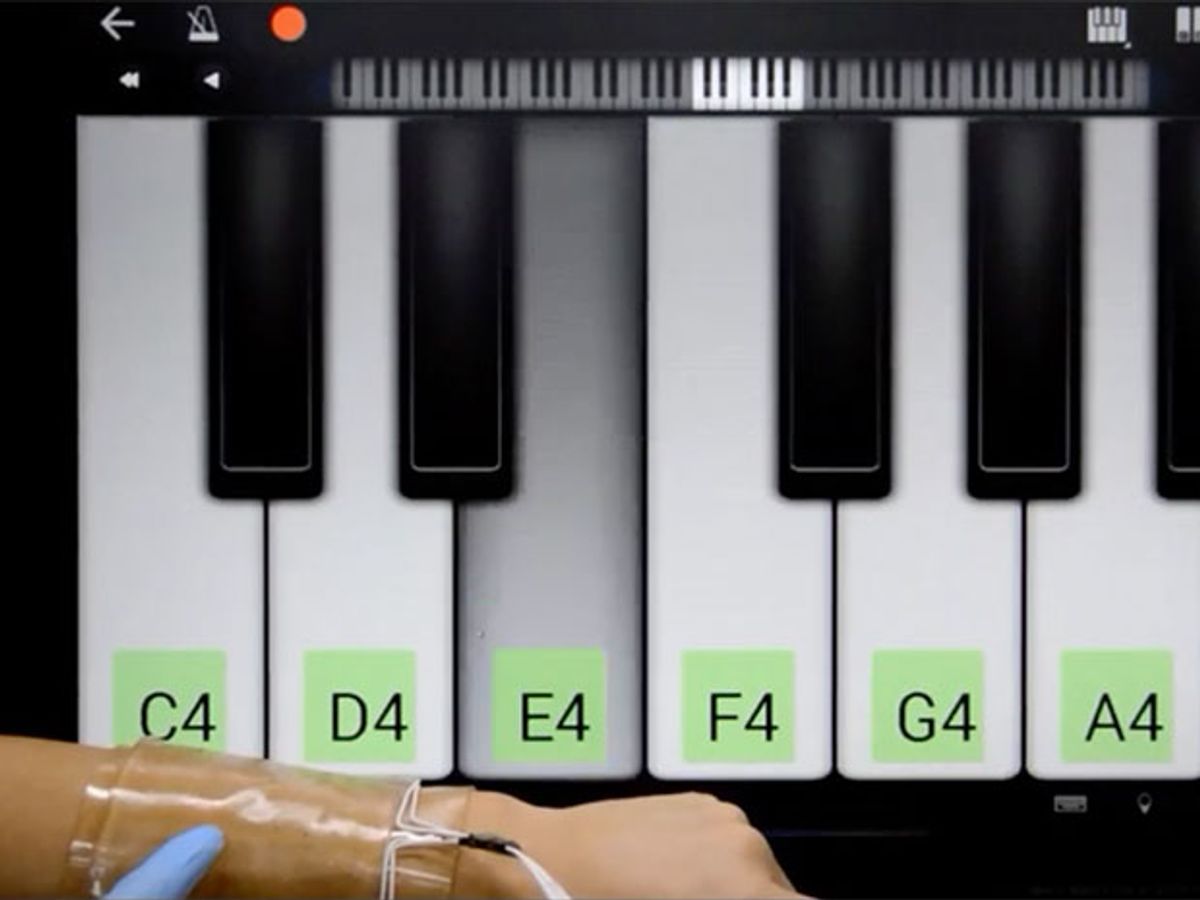
A new, stretchable transparent touch pad can be used to write words and play electronic games, and it may even one day be implanted inside the body, its inventors say.
Touch pads and touch screens are on nearly every smart device these days. But they can’t go on anything flexible, such as the human body. Scientists have explored stretchable touch panels based on carbon nanotubes, metal nanowires, and other advanced materials, but the performance of these stretchable touch panels fell off sharply when they were stretched. Just as bad, they also fell apart over time when repeatedly stretched.
To overcome these problems, scientists at Seoul National University created a touch pad made of the same kind of soft and very stretchable hydrogel used to make soft contact lenses. The hydrogel involved contains lithium chloride salts, which are electrically conductive and help the hydrogel hold onto the water it needs to stay soft.
In operation, the same small AC voltage is applied to all four corners of the touch pad. Because the signals are in phase and the hydrogel acts as a capacitor, no current flows until the device is touched. When a grounded object such as a human finger makes contact with the touch pad, it closes the circuit, and current flows from each corner in proportion to how close the finger is to that corner. Sensors then measure the difference in current that each corner of the pad receives to determine the finger’s position.
Using the touch pad, the researchers were able to draw a stick figure, write “Hello world!” and play the piano and chess. Moreover, the touch pad still worked even when stretched to more than 10 times its normal area. It also worked when bent around the skin of a person’s arm.
The touch pad is transparent, letting through 98 percent of visible light. This suggests that it could be combined with a stretchable video display to create a stretchy touch screen.
The scientists noted that the screen is biocompatible.
“If you want to interface electronics with biology, you ideally want soft, stretchable electronics with the same kinds of properties seen in biology,” says John Rogers, a materials scientist at the University of Illinois at Urbana-Champaign, who did not take part in this research.”The researchers have demonstrated a nice advance that adds to the growing tool kit of stretchable electronics for interactions with the body. Skin would be a great starting point for such an electronic interface, since implanting there would probably pose minimal health impacts.”
The research team did note that after 100 cycles of stretching and relaxation, touch pad performance did decrease slightly. They suggest this is because water evaporated from the hydrogel. “Addressing that drying-out process would be an area for future progress,” Rogers says.
The scientists detailed their findings this week in the journal Science.

Charles Q. Choi is a science reporter who contributes regularly to IEEE Spectrum. He has written for Scientific American, The New York Times, Wired, and Science, among others.



